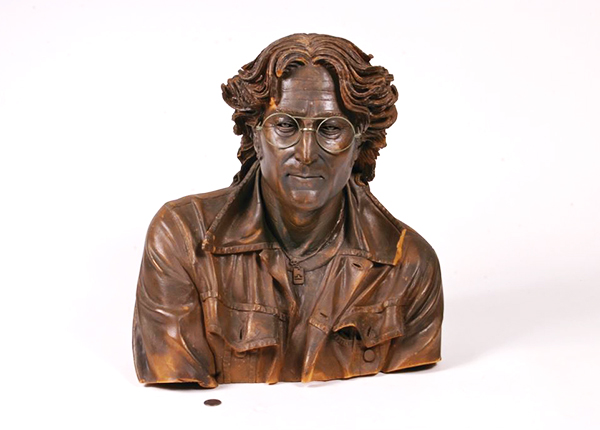
Artist’s Wax from the John Lennon Bronze Statue
ITEM #693
The life-size bronze statue of John Lennon created by Sir Brett-Livingstone Strong sold for $1 million in 1988, just 8 years after Lennon’s untimely death. Presented as part of this collection is the artist’s wax that was used to model a bust of Lennon, a project which expanded to become the life-size model.
Artist Bio
Sir Brett-Livingstone Strong is an international artist in a class of his own, capturing the attention of the public for decades with his award-winning creations, groundbreaking partnerships and large-scale monumental projects, architecture, and landmark attractions. Sir Brett’s talents have been commissioned and praised by world leaders, celebrities, and elite collectors for the unique creations he continues to produce throughout his celebrated and historic career.
Malibu Rock
Above the speeding autos on Pacific Coast Highway rises the Malibu hillside once home to Southern California’s original “rock” star. The 116-ton boulder was exposed by winter erosion 33 years ago as a menacing megalithic rock, threatening to roll down the slope and pulverize whatever pedestrians, beachgoers or beachfront homes happened to be in the way. Efforts by Caltrans to bring it down safely provided fodder for lead stories on the news night after night in February 1979.
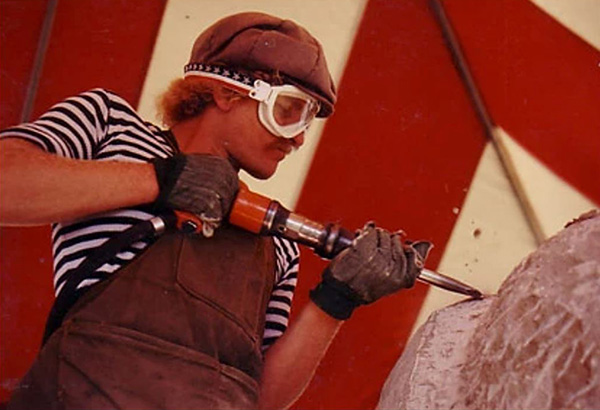
25-year-old Strong approached the Malibu crew and bought the rock for the hundred dollars he had in his pocket. He then worked out a deal with the operators of a shopping mall in Century City.
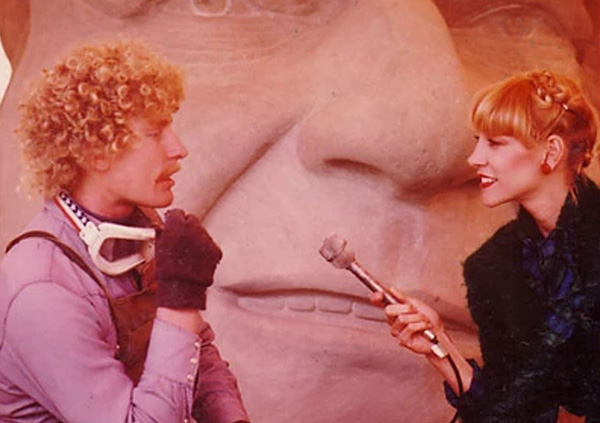
He would do his sculpting in public view, providing entertainment for shoppers. “I wanted to do a tribute to actor John Wayne since he had volunteered to sponsor me when I decided to move to the states”. Strong envisioned a giant theatrical mask of Wayne’s chiseled expression and went to work chiseling it in stone. It took three months, and when it was done, Strong fielded an offer from an entrepreneur of more than $1 million. The tycoon displayed it at Grauman’s Chinese Theatre for a year and eventually donated it to Lubbock Christian University, where it remains on display to this day.

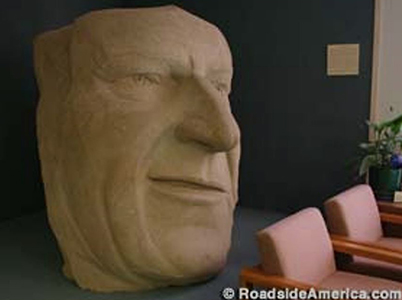
The Artist & the Promoter
“When I met Brett back in March 1979, recalls Chris Agajanian, I met an artist that had really caught my attention. He had just sculpted a giant boulder that Cal-Trans had pulled down from a mountain cliff over Highway One in Malibu.
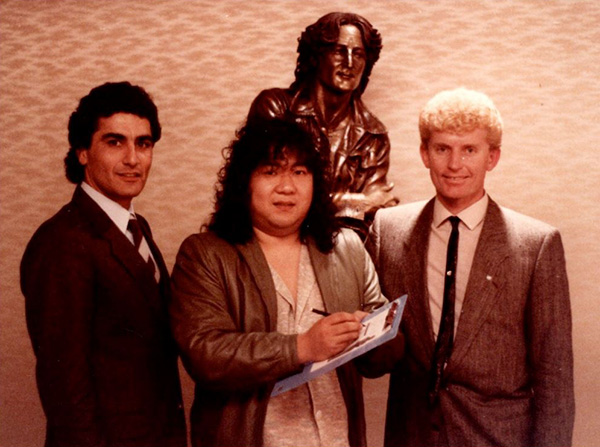
He was such an engaging character, brilliant both in the way he thought and created art… I was quite fascinated by him. It wasn’t long until we became close friends and have been ever since. As partners, we had done some fun projects together. One such project was the “John Lennon World Peace Monument”. It was sponsored by Capitol Records, EMI, and Rolling Stone Magazine. We had received an offer we couldn’t refuse by Japan’s oldest and largest life insurance company, Asahi Mutual Life Insurance. They asked us to accompany Brett’s statue to Tokyo and meet “THE BEATLES Japanese Fan Club”, which is the world’s largest.
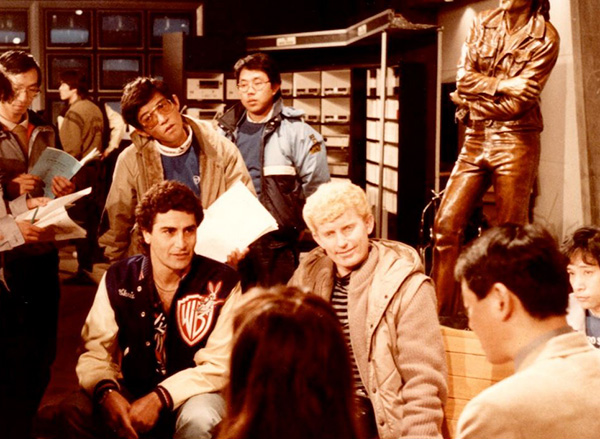
When we arrived at Narita International Airport, we were greeted by an English-speaking guide and a chauffeur-driven town car. We passed numerous huge billboards announcing the arrival of the John Lennon statue and many posters that were placed strategically around the city.

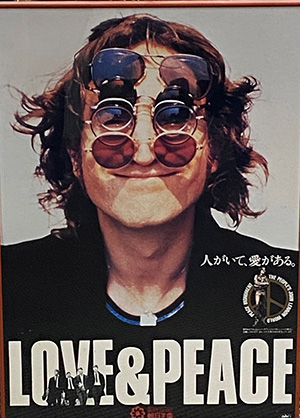
We had several interviews to do, including some national television shows and many private, corporate parties. A good time was had by all. Originally the statue was unveiled in Central Park, New York by celebrated artist Andy Warhol. In 1983 the statue was prominently displayed on the stage of the Us Festival.“

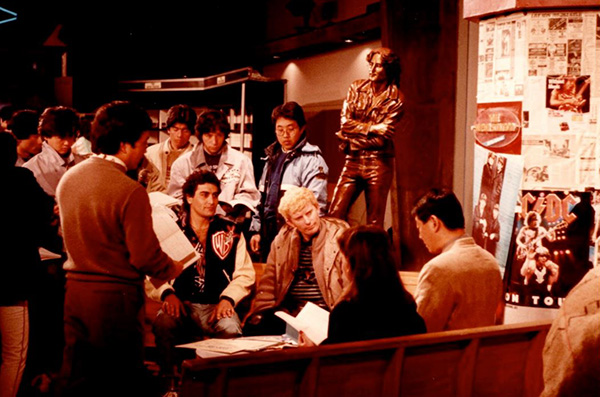
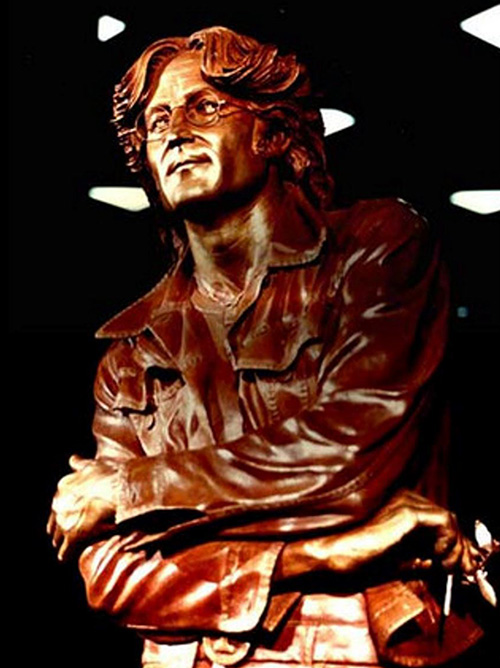
The wax of Lennon’s bust was hand carved by Sir Brett and is the only one of its kind. This piece was originally carved for the bronze casting a bust of Lennon.
One of the most common casting methods that Rodin used was the cire-perdu (or lost-wax) process. Although expensive and time consuming, this method allows artists to accurately reproduce the delicate nuances of an original model. It is so called because the wax model is destroyed in order to create the piece. Thus, in some cases it is felt that an artist’s wax may be more valuable than the sculpture itself.

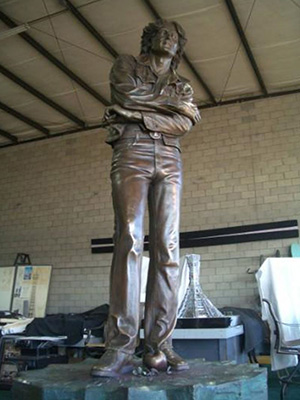
Later Work
Year later, Sir Brett Strong was commissioned to paint the Royal invitation for the Royal Opening of the Sydney Opera House by Her Majesty Queen Elizabeth II. Strong was also knighted in 2009.
